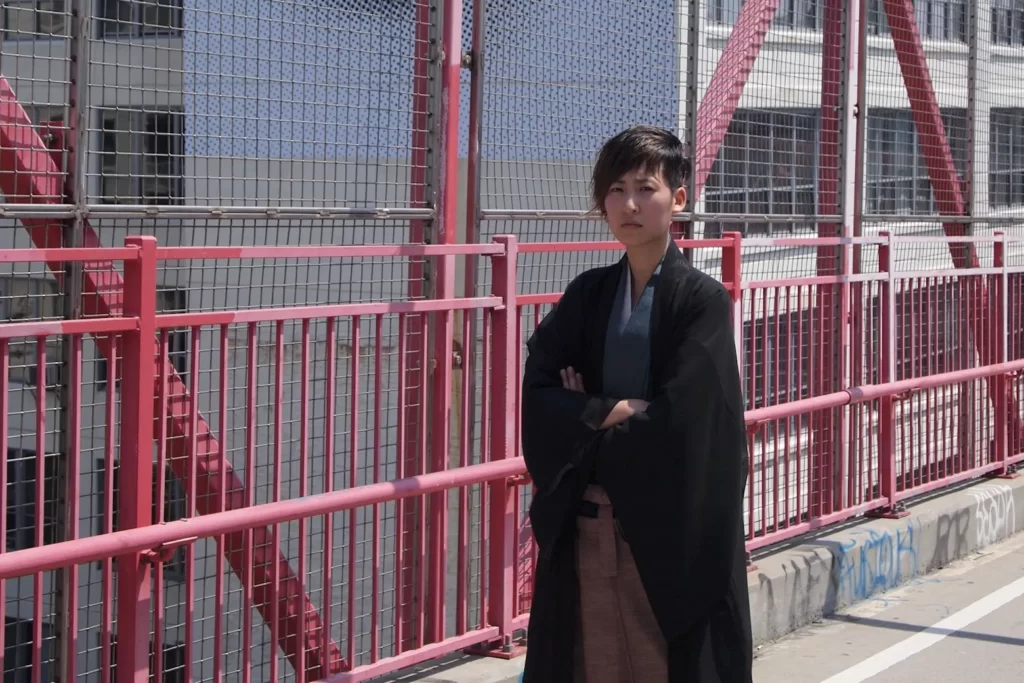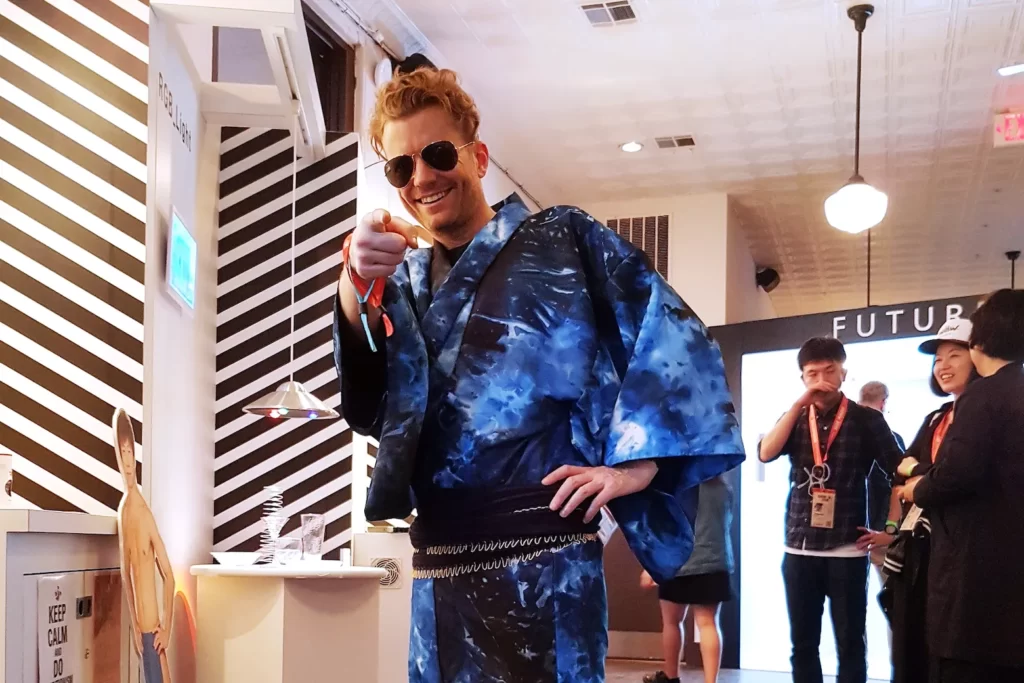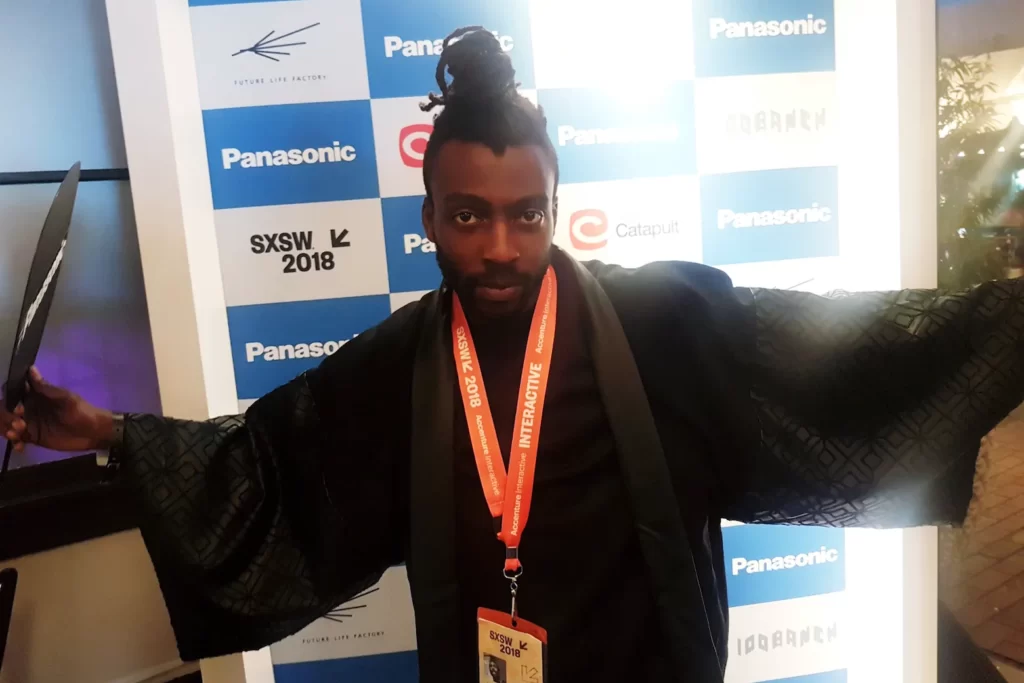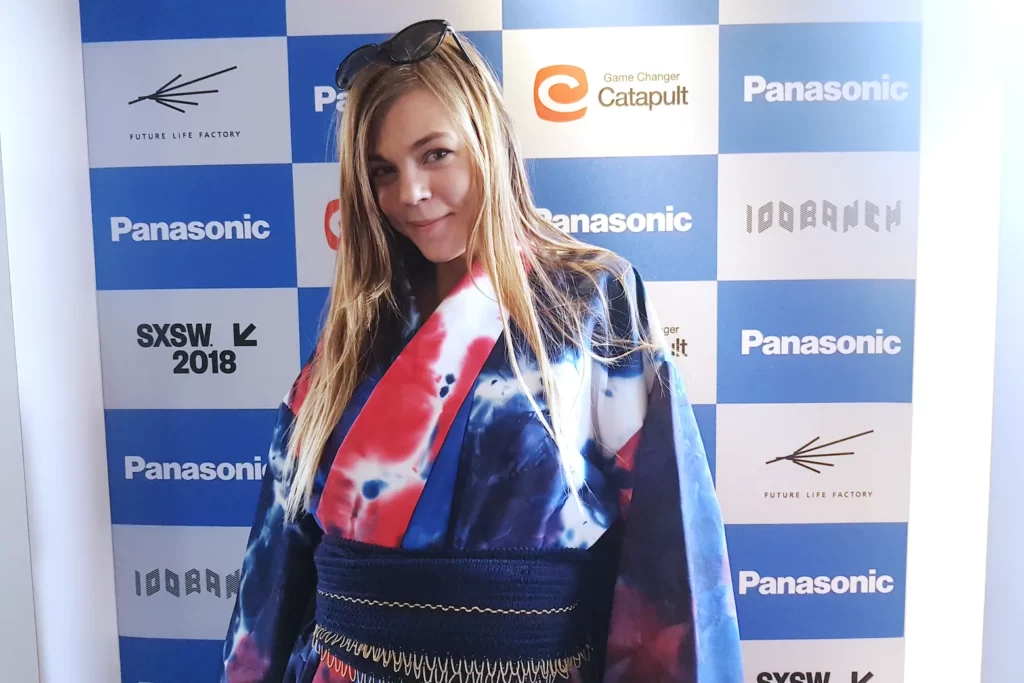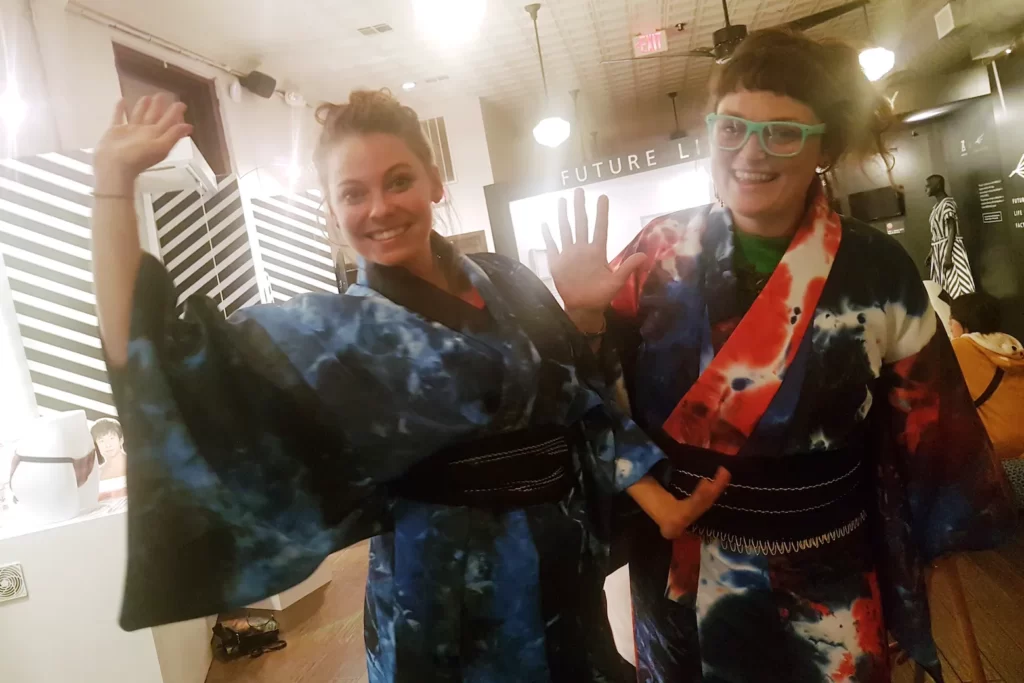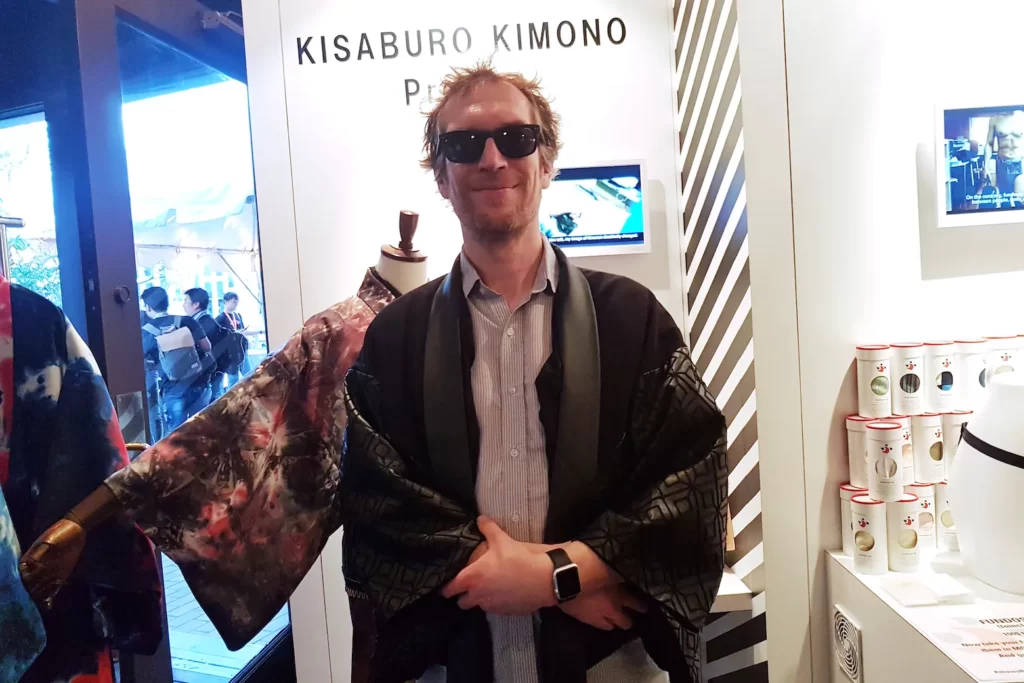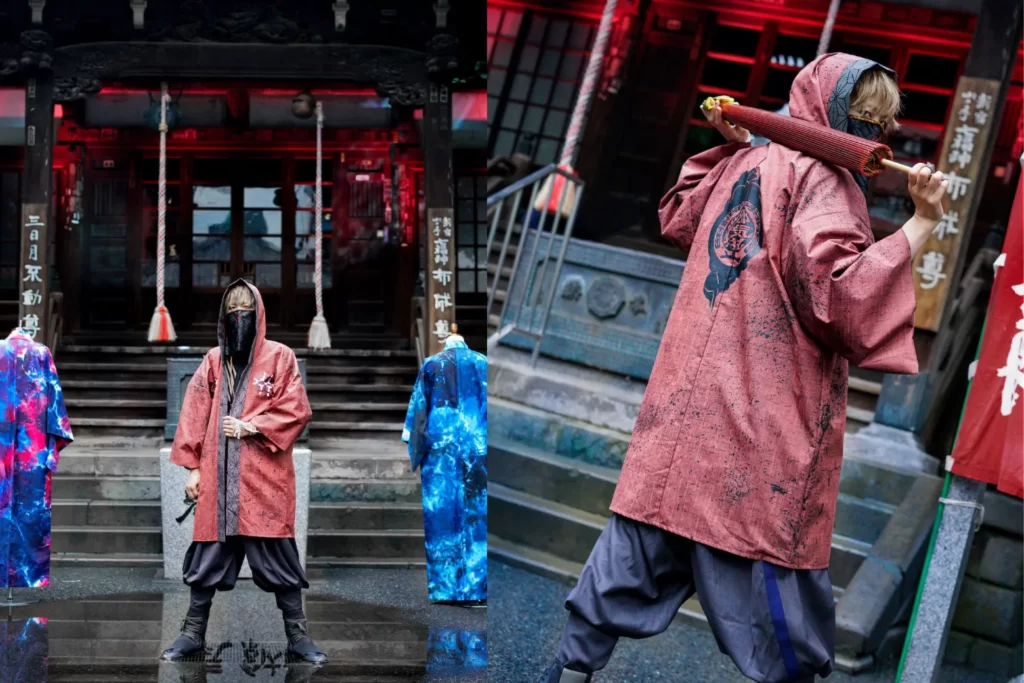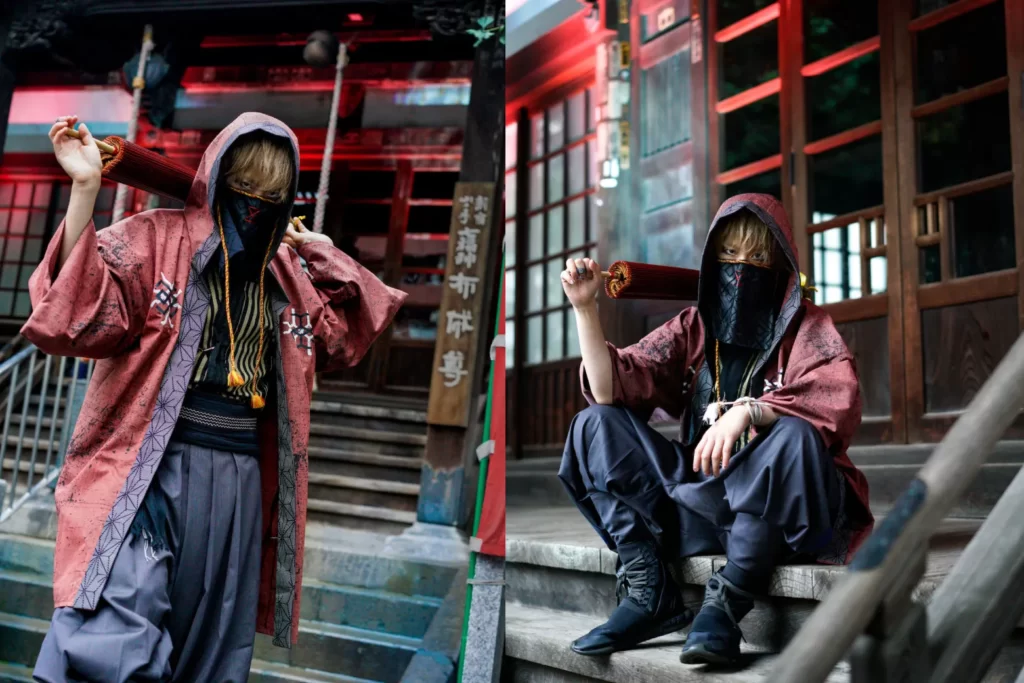Kimono Teaches Us How to Adapt? Insights from Kisaburo, a Kimono Designer
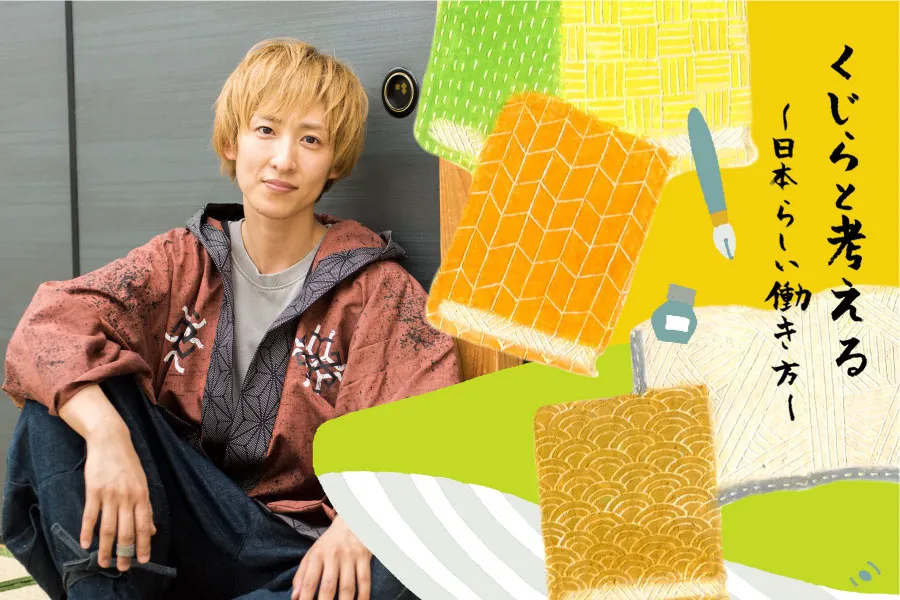
In a world where work styles are constantly evolving, more and more brands are turning towards different traditions and cultures to understand their target customers better and connect with them on a deeper level. Among those diverse fronts of inspiration, Japan’s cultural heritage emerges as a rich source.
And no talk of Japan’s cultural tapestry is complete without the mention of its National dress- the Kimono. A traditional Japanese attire, the Kimono is a wrapped-front garment with square sleeves and a rectangular body and is worn left side wrapped over the right by both men and women. But can a dress inspire business?
Respected Kimono designer and artist, Kisaburo explains this in this article, where his insights not only redefine the fundamental charm of this traditional attire but also offer deep lessons about embracing change and breaking free from conventional boundaries. He also explains how the Kimono is symbolic of the humor and adaptability of the Japanese temperament.
Kisaburo and his encounter with the Kimono
Usually, people might think of “Kimono” as something complicated and difficult. But for Kisaburo, Kimonos are more than just beautiful clothes. They represent something bigger – a way to freely express yourself, which matches the Japanese spirit. Busting a popular myth, Kisaburo clarifies that Japanese life was never just about strict rules. When the Japanese started wearing Western clothes, it wasn’t a sudden shift.
The Western-style clothing gradually blended with the Japanese way of dressing. For instance, someone in those times might have worn a Western coat with a Japanese hakama skirt. This shows that is possible for different styles to beautifully come together, just like in life.
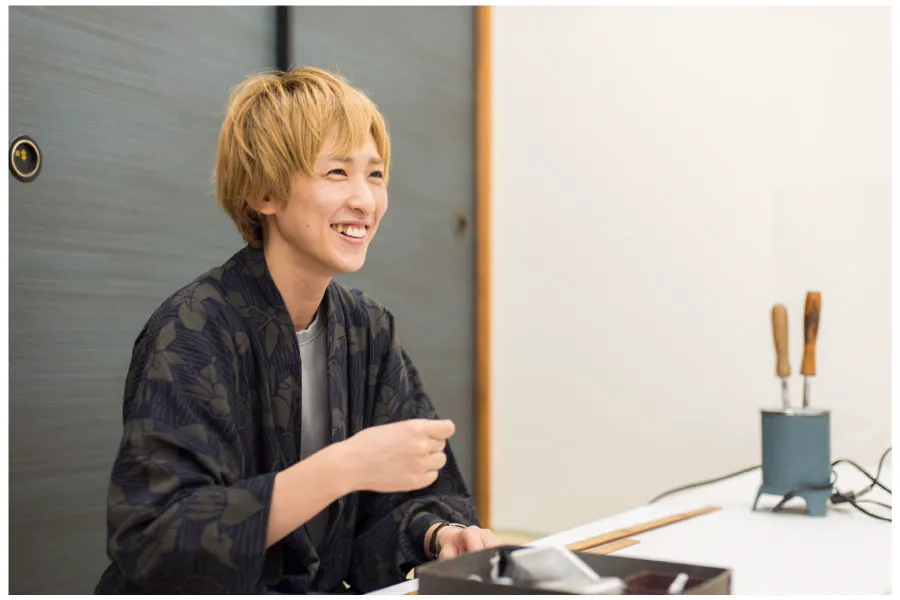
Kisaburo, Kimono Designer
Kisaburo Kisaburo, the fourth generation of the 90-year-old tailoring company “Iwamoto Wassho”, inherited the name of Kisaburo Iwamoto, the first generation, who was an innovator in the kimono industry, and proposes outfits that are close to you as you are, aiming to free all people from preconceived ideas, crossing not only Japanese and Western borders but also gender borders. 2015 Kisaburo Kaikoku Exhibition” Matsuya Ginza, 2016 “ISETAN×Lupin III LUPINISSIMO IN ISETAN2016” , 2017 “Takizawa Kabuki 2017 Pamphlet Costume Designer”, 2018 31st Dragon King Tournament, Kimono Design for Yoshiharu Hanyu, NHK “LIFE!” SP Ninbe! Uzaemon Costume Design, 2019 Panasonic 100BANCH 1st Fellow.
Kimono designer Kisaburo is the fourth-generation owner of Iwamoto Wasai, a tailoring company, which was founded in 1922. Named after the company’s founder & renowned Kimono industry personality, Kisaburo Iwamoto, Kisaburo aspires to create outfits that help people escape preconceived notions and express their true selves, breaking down the boundaries between not just East and West but also between men and women.
Interestingly, Kisaburo didn’t start off as a Kimono designer. A media art alumnus of Tama Art University, he ventured into unrelated fields, even working in a video production company. But the allure of the Kimono captured him, ultimately setting him on a new path.
Tracing the Roots
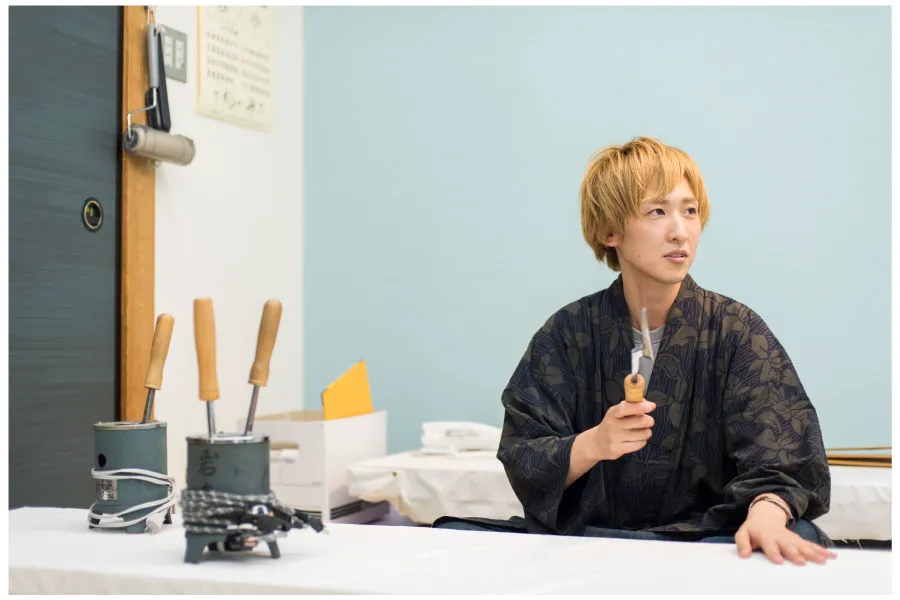
Kisaburo’s namesake and the founder of Iwamoto Wasai, Kisaburo Iwamoto, was born into a family that sold oil for lamps and paper lanterns. But when the family business shut down because of the advent of electricity, he started working as an apprentice at a Kimono shop, picking up the skills of the trade, which he later used to establish his own business- Iwamoto Wasai.
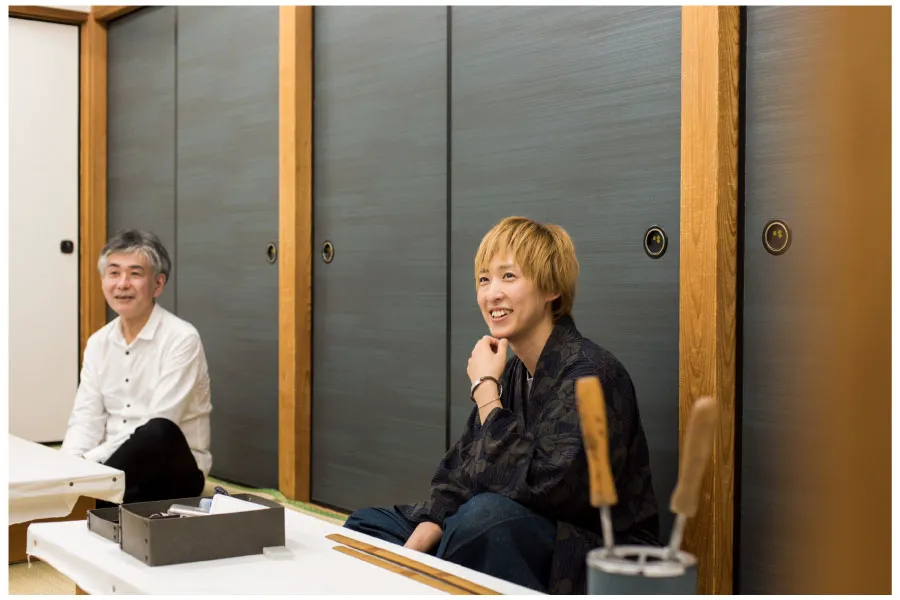
Iwamoto is said to have had a flexible mindset, which could be seen in some of his business decisions like introducing sewing machines to the Kimono-making process or promoting Japanese clothing by offering Kimono-making classes through a popular magazine.
According to Kisaburo, Iwaboto’s designs expressed a lot of freedom which was way ahead of its time. He used to borrow colors and patterns from kabuki costumes and recombined them to create new designs.
The Intrinsic Value of Sustainability and Elegance
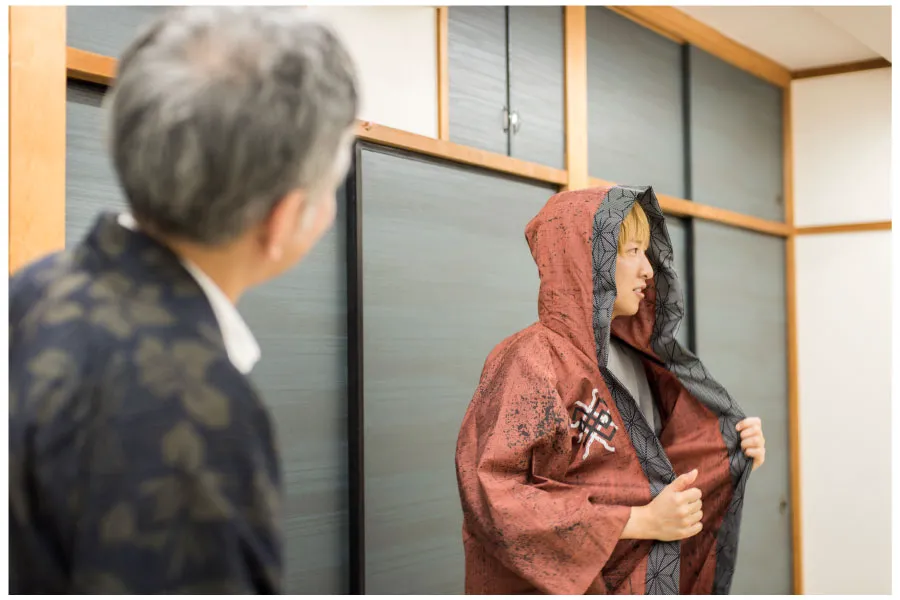
Kimonos are often celebrated for their intricate designs and vivid colors, but according to Kisaburo, they are also intrinsic to the elegance of the city of Tokyo. “Edo Komon patterns… look plain, but closer inspection reveals the detail. That’s what makes them so elegant.” Kisaburo explains.
For him, part of the Kimonos’ charm is their sustainability and logical construction, which is why he cuts the fabric in straight lines to utilize every piece and avoid any leftovers. This is based on the idea that as long as the fabric is repaired, when necessary, Kimonos can be used for a long time and also be worn across generations. Kisaburo says, “This fundamentally eco-friendly form of craftsmanship has been passed down from generation to generation, and I want to honor that.”
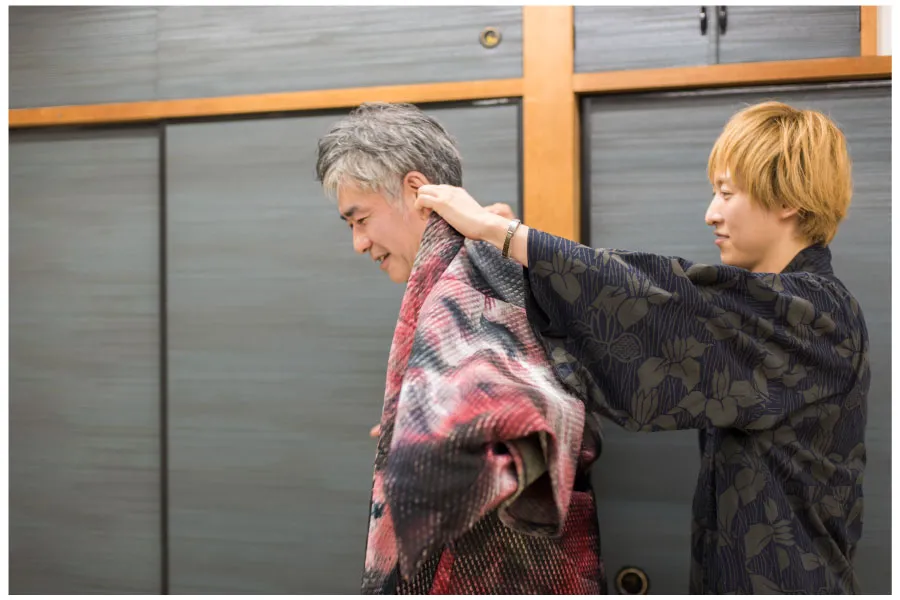
While Kisaburo also incorporates Western clothing elements in his designs, he tries not to modernize it too much, so that the essential charm of the Kimono remains intact.
Can Kimonos be worn every day? Why not!
– 202008 The latest work “Mayoke” (Photo by Kazuha Uemura)
It is a common misconception that Kimonos are just formal, stiff clothing or ceremonious dresses when in reality, there are different Kimonos for different occasions. While they are sometimes worn as loungewear in the West, Kimono sleeves are also being used in alternative fashion. That is why Kisaburo also wants to design Kimonos that can be worn on diverse occasions- whether to casually relax, or make a fashion statement.
Kisaburo’s overseas experiences have also shown him a fresh perspective. In Brazil, during workshops, participants would customize Kimonos without hesitation. They’d make changes like tying the strings differently or shortening sleeves. This freedom fascinated him.
On the contrary, people in Japan tend to stick to conventions. Kimonos were originally everyday clothes that changed to reflect the customs and fashions of the time, but at some point, people began to treat them as formalwear, and as a kind of sacred tradition. That’s why Kimonos are sometimes called “Haregi” or one’s best clothes.
Kimonos have become increasingly distant from everyday life and Kisaburo wants to reverse this trend by bringing them back as everyday clothes that can be styled more freely, whether to be worn as office wear, loungewear, or everyday t-shirts.
“Most people today would never consider wearing a Kimono outside of special occasions or when wearing a yukata at a fireworks display. I want to make it more like choosing a T-shirt — something that people can make a part of their everyday fashion. ‘Instead of a jacket, maybe I’ll wear a Haori today.’ I think Kimonos make perfect office wear, too.”, Kisaburo suggests.
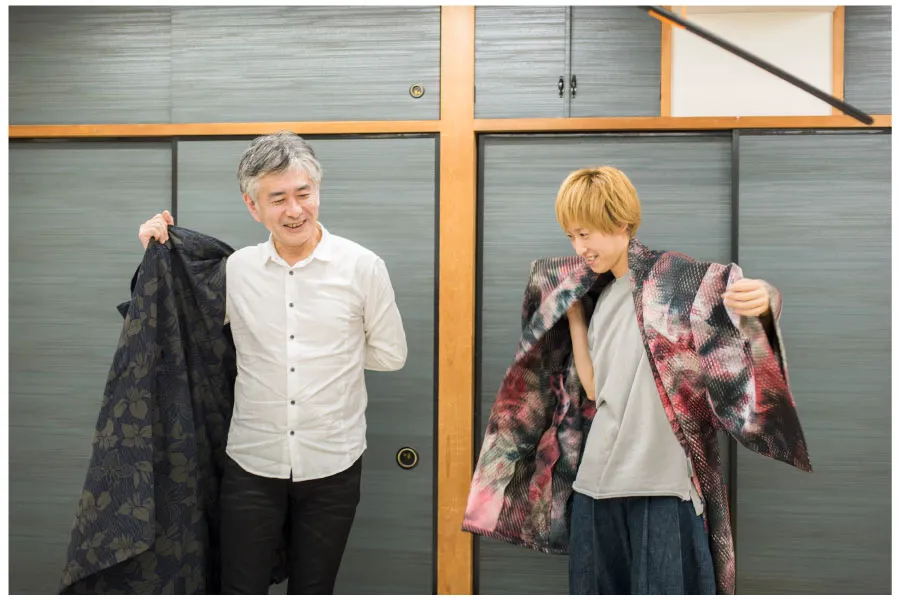
Learning from the Troubles of the Past
The COVID-19 pandemic has made remote work common and there has been some concern that people will lose interest in fashion as they now have fewer opportunities to meet others in person. However, interestingly, there’s been a surge in people enrolling in Kisaburo’s Kimono-making courses.
This phenomenon isn’t just about fashion; it’s about seeking solace in tradition during challenging times. Kisaburo points out that it is precisely at this time of disaster that we have much to learn from old Japan who always found creative ways to deal with things.
One such way was resorting to charms and customs for protection during times of crisis. Sharing an example of this, Kisaburo tells us, “During the Meiji period (1868–1912), Japan was struck by an illness called the “Osome cold,” which was named after a popular Kabuki play. In the play, Osome is in love with a man named Hisamatsu, so to ward off the illness, people would put a sign on their door that said, ‘Hisamatsu isn’t home.’ In other words, ‘Your beloved Hisamatsu isn’t here right now, Osome, so don’t come in!’”
Inspired by this ancient practice, Kisaburo held an online event called “Not Home”, where he asked people to send him an article of clothing alongside a description of what they feared at the moment. He added a protective pattern to the clothes to ward off evil and sent it back to the owner. The clothes were then presented online.
Whether it’s practicing superstitions or asking for help from the gods, there’s a certain appeal to things that have been done since ancient times. That’s why Kisaburo believes that the past can guide us through modern challenges. He believes that sometimes, it’s good to deviate a little from the norm and common sense and to be alternative.
Walking on this path, Kisaburo hopes to reconstruct the idea of what a Kimono ‘should be,’ while collaborating with genres that encompass more than just the Kimono.
Adapting to Change with “Common Sense”
As the world changes, the Kimono changes too, reflecting exactly how society behaves. What used to be everyday clothing turned into special, ceremonial attire. But Kisaburo wants Kimonos to be normal again, just like regular clothes. He compares this to the changing face of work culture, emphasizing the emergence of remote work as a new “common sense.”
He says, “Kimonos are now limited to special occasions, and that makes them feel all the more luxurious when we do wear them. In the same way, when it becomes common practice to work at home, the office will become a luxury that is used only on special occasions… I dream that someday there will be people who come to work in casual Japanese clothes and that this will become the new “common sense.”
Kisaburo’s insight resonates, portraying a future where both attire and work settings change to reflect the changes in people’s priorities.
Conclusion- Redefining the Norms
Kisaburo’s journey paints a portrait of Japanese resilience and adaptability. Through Kimonos, he advocates breaking away from norms and embracing uniqueness. The beautiful Japanese Kimono is not just about fashion; it stands for a broader message about embracing change in all aspects of life. Just as Kimonos evolve from ceremonial garments to symbols of daily expression, workplaces too can evolve from rigid structures to more fluid environments. In Kisaburo’s tale, we discover a celebration of individuality, a call to let go of conventions, and a journey toward harmonizing tradition with modernity. Much like Kimonos, which transcend time, the Japanese way of working evolves, blending heritage with the contemporary.
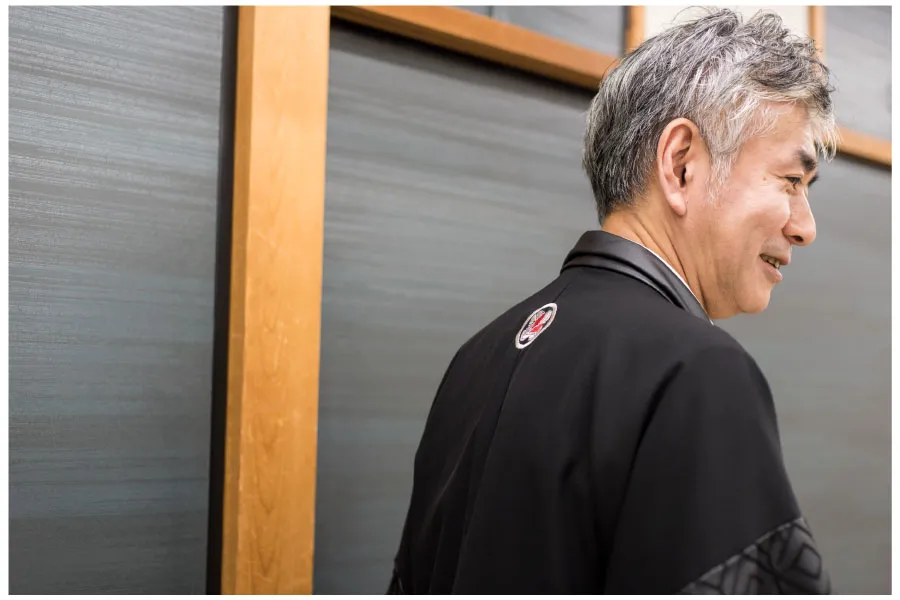
Yasushi Kujirai
Mr. Kujirai is engaged in researching how the working environment should be in order to make everyone involved in the office happy, and developing methodologies and tools to construct such a working environment. For more than 30 years, he has been actively seeking to acquire a wide range of knowledge in order to deal with the extremely interdisciplinary subject of the office. His major publications include “Office Jiten (Office Dictionary),” “Office Environment Planning Handbook,” “Management Innovation and Office Environment,” “Office Evolution,” and “Future Prospects for ‘Hataraku'” (The Future of ‘Work’).
Updated September 10, 2020
Production Cooperation: Sachiyo Oya
Photo: Mizuki Ono
Illustrations: Uni no Reona
Photo by Kisaburo, FOGHORN




